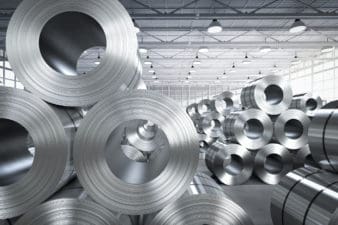After hitting highs of $6.46 this May, shares of Lundin Mining Corporation (TSX:LUN) are back to $4 for the fifth time in five years. If you had bought shares each time it approached this level in the past, you would have been sitting on massive gains in only a few months. Still, it seems as if the gains always prove temporary with the total return essentially flat since late 2011.
With its latest drop, do shares have the potential to rebound yet again? And are the longer-term prospects still as weak this time around?
A diversified portfolio is not always helpful
For a junior miner, Lundin has a fairly diversified portfolio by both metal and geography. While it is headquartered in Toronto, the company owns mines in Spain, the U.S., Chile, Portugal, Sweden, Finland, and the DRC. Its mines produce everything from nickel and copper to gold and silver. Many of its properties are on the cheap end of the industry cost curve, resulting in higher margins and less operating risk.
Still, a diversified portfolio doesn’t help when the price of all commodities move together, which they have often done in recent history. Sales this quarter were $353 million, representing a 30% decline over the previous quarter. The chief factor is lower metals prices. Lundin’s realized copper, nickel, and zinc prices declined by 20%, 30%, and 22%, respectively.
Lundin marches on
While no miner can fully mitigate the impact of lower selling prices, Lundin has positioned its business for the long term. With a market cap of $2.8 billion, the firm has only $454 million in net debt, resulting in one of the best balance sheets in the business. Cash levels have grown every quarter this year to $550 million. With an additional $350 million in undrawn credit facilities, Lundin should have no issues surviving the current environment.
In fact, lower prices could actually end up helping the company long term by forcing out excess supply. Right now, over 10% of supply for copper, zinc, and nickel could be considered extremely high cost. It’s only a matter of time before these marginal producers exit the market. Lundin should simply be able to outlast most of its peers.
Can copper save the day?
So, we’ve determined that Lundin can survive, but what factors are necessary for another rebound in shares? Despite its diversified business, profits are still strongly influenced by swings in copper prices. Unfortunately, since 2010, copper prices have fallen by half to just $4,900 a metric tonne. Slowing growth in China, the world’s biggest copper importer, is largely to blame.
This demand issue doesn’t seem to be solving itself any time soon. Goldman Sachs predicts that consumption in China won’t grow at all this year, while forecasting global surpluses of at least 500,000 tonnes from 2016 to 2019.
“We do not see these bearish drivers changing for some time, and as such producers are set to remain under pressure and likely to rationalize global production,” the bank said. “A fight between miners to cut costs as demand weakens would result in self-reinforcing cost and price deflation, echoing patterns seen in the bulk-commodity markets.”
This time it’s different
Previous pops in the share price were largely caused by renewed investor optimism in copper prices. When those aspirations never actualized, the stock slowly sifted back towards the $4 range. This time around, struggling copper prices aren’t a temporary phenomenon; they could potentially last for years.
If you’re considering an investment in a metals miner, knock Lundin off your list.





